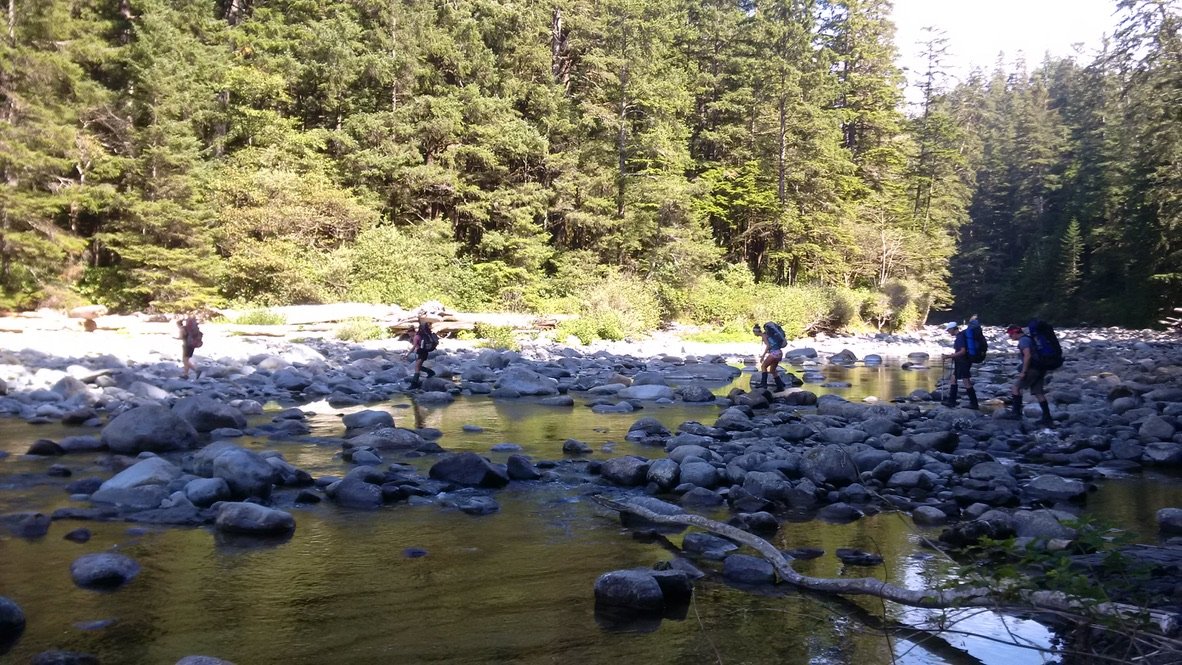Are you Managing your “Hotspots?”
Lessons from the WCT
Completing Vancouver Island’s iconic 75km West Coast Trail was memorable on multiple fronts. The team was comprised of two of my best friends (my sister and college roommate), my dad, my uncle, and my pseudo uncle. Our crew expanded as we journeyed along the trail, with the addition of two German girls and a man from Quebec, all invited to join our nightly fireside chats. We shared stories, sore muscles, dehydrated foods, and beautiful ocean views.
Apart from the remarkable individuals, the hike offered valuable insights to apply to life and leadership. Covering 75km on foot presented numerous variables that could deviate us from our mission to complete the trail. Before embarking, we were briefed on potential risks like bears, cougars, slippery boardwalks, steep ladders, rising tides, and remote locations. Yet, amidst these challenges, an often overlooked threat emerged — one that our fearless leader, my dad, frequently reminded us of — to prevent blisters by managing our “hotspots.”
As an experienced trailblazer, my dad understood the havoc a blister could wreak, even for seasoned hikers. He emphasized the critical window of treatment before the blister became irreversible and how ignoring a hotspot could lead to a painful wound, potentially immobilizing us. Any time a team member sensed a hotspot, we stopped to address it promptly, preventing it from escalating.
The Consequences of Ignoring Hotspots
Many leaders try to ignore relational “hotspots” to their own peril. They notice a tension, or something that is just off, and they simply hope it will go away. Instead of miraculously vanishing, these issues fester, transforming into insurmountable problems. Similar to a hiker unable to reach their destination, a leader is forced to deviate from their organizational aspirations to address the escalated problem.
The costs of neglecting tensions within an organization are substantial. Almost anyone can relate to the strain of difficult coworkers, or can recall the haunting experience of group projects that took years off your life, but rarely do we calculate the actual costs. In Canada, unresolved conflicts costs the average business owner $2 billion and across the states, a reported total of $359 billion annually. Unresolved conflicts lead to stress, employee turnover, broken trust, fractured relationships, lessened productivity, and the list goes on. These inefficiencies are expensive and counterproductive. Simply put, leaders cannot ignore conflict and expect their companies to survive. So, why do leaders overlook hotspots? It's likely due to a lack of resources and training to engage the hard conversations.
The Need: Increased Capacity
Just as hikers are unable to treat the pain without the necessary tools for blisters, leaders may avoid early signs of problems (minimizing the issue, rationalizing it away, or making excuses) if the conflict skills they need are not readily available. To increase capacity, leaders must learn, practice, and implement skills that diffuse early signs of tension, ensuring the organization's mission remains on track without being consistently derailed by exacerbated tensions.
Employing an Adaptable Method
In my work with clients, I assist them in identifying and addressing their hotspots, enhancing their capacity to manage tensions. Rather than isolating and processing individual issues, I collaborate with clients to explore the systems continually generating tensions. Equipping them with a mindset and method to engage everyday tensions and empowering them to navigate issues for growth and change.
In the current landscape, leaders require an adaptable method to engage complexity. Leaders may default to a policy to navigate conflict, but this process can be rigid and unsatisfactory. Relying on policies to navigate issues is like waiting for your blister to become septic and getting surgery. It may fix the problem, but the issue could have been mitigated much earlier (Note: just like some surgeries are not preventable, some policies appropriately support a response to critical situations).
So what can a leader navigating conflict do?
A website on blister prevention (yes this is real) gave a simple framework for managing hotspots:
STOP: Pause and acknowledge the issue at hand, taking a moment to address it, no matter how inconvenient.
DO SOMETHING: This website prompts you to, “Get in, get it done and get on your way again, in 100% comfort.” What a lovely guarantee😊
Leaders could benefit from following this same advice. Just as a bandaid supports early intervention for a hiker, noticing the relational pain point and engaging it with a simple question could support discovery and mitigate escalated conflict.
What are the “hotspots” in your life, work, or relationships that require attention? And how could you increase your capacity to engage?
Stay curious,
Jodi
